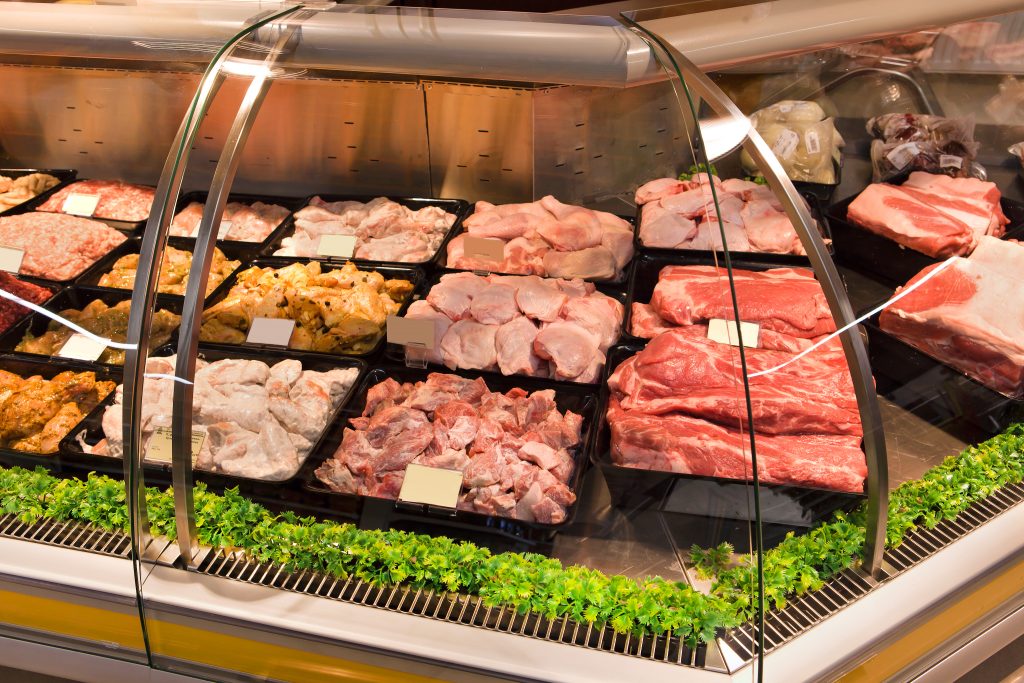
Senior Farm and Ranch Broadcaster, Ron Hays, is talking with Kansas State University Extension Livestock Market Economist, Dr. Glynn Tonsor, about the latest data from the meat demand monitor he helps oversee at Kansas State University.
“That is a beef and pork checkoff-funded project that is a domestic survey-based effort,” Tonsor said. “All the information, the raw data, the surveys, all the reports, you name it, is on our agmanager.info website as well. This is a national effort. A lot of stakeholders behind it.”
Retail and food service demand are the two different market channels tracked in the survey, Tonsor said, and those channels give insight on beef, pork, and chicken demand.
“Retail demand was up for three of the eight categories that we track in April compared to March, however, in all eight categories we track, demand was down compared to April of ’22,” Tonsor said. “Grocery store channel demand has slipped below a year before. We have a few instances, including the two beef categories, where it was up a little bit compared to March.
Food service demand was up versus March, Tonsor said, specifically willingness to pay for a meal with a meat entre at dinner. Demand for all types of meals, Tonsor said, were flat or down compared to a year earlier.
“We are having some demand slippage,” Tonsor said.
The drop in demand, Tonsor said, could be because of rising costs impacting consumer buying power.
“The point is the majority of our public, working age public, has recently experienced inflation they haven’t experienced before, and their wages didn’t keep up the cost of living,” Tonsor said. “Not surprisingly, one of the things we pick up on is in April of ’23, we had more people pessimistic, I’d say, on their household finances than we had in April of ’22 and April of ’21.”
The large percentage of individuals who are pessimistic about the cost of living, Tonsor said, directly impacts their willingness to purchase beef.
“Specifically, about 20 percent in April said their finances were better than they were a year ago, which means 80 percent say they were either the same or worse,” Tonsor said. “So, more are definitely concerned than are optimistic. If you are in the optimistic bucket, so if you tell me your finances are better today than they were a year ago, you are much more likely to have also told me, ‘I had beef in one of my meals yesterday,’ and by the way, the same statement holds for pork yesterday.”
In summary, the more concerned people are about their finances, Tonsor said, the less willing they are to purchase beef and pork at home and away from home.
Tonsor also gave an update on foreign demand for U.S. meat.
“USDA’s foreign ag service is where we get that trade data from, and then we have other measures we bring into that, that allows me to say that, unfortunately, foreign demand for U.S. beef slipped all the way up through February, declined since last July,” Tonsor said.
Demand is a measure of how much someone is willing to pay, Tonsor said, and consumption is just a volume number with no consideration of price.
“What I am sharing here is demand information, which is the value people are putting on the pounds” Tonsor said.
There are no signs that indicate that the foreign public does not want U.S. beef, Tonsor said, but as global economies slow down, the buying power of those individuals is also slowed down, which impacts the ability to pay for U.S. beef.
The Beef Buzz is a regular feature heard on radio stations around the region on the Radio Oklahoma Ag Network and is a regular audio feature found on this website as well. Click on the LISTEN BAR for today’s show and check out our archives for older Beef Buzz shows covering the gamut of the beef cattle industry today.


















